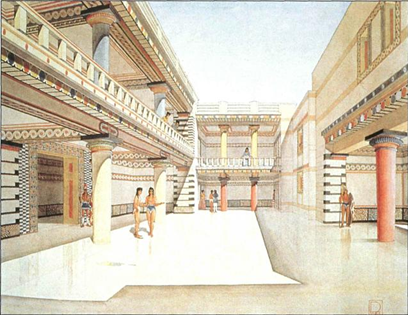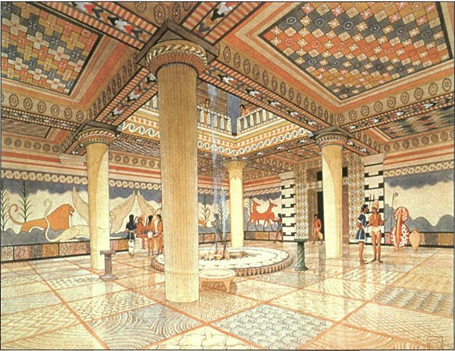Main Buliding
The connecting room (9) was a pantry with wooden shelves on which stood hundreds of wine cups. The guests thus seem to have been offered refreshments while they waited. The cups now lie on the floor, warped, distorted, and vitrified by the heat as they fell when the shelves that held them were consumed by the fire that destroyed the palace.

When the time came, one proceeded through the por¬tico (4) with its two columns, only the stone bases of which survive. The walls seem to have been rather elaborately decorated with wooden wainscoting and panels. To the right, beside the doorway, is the stand for another sentry or attendant. Through the doorway one reached a vestibule (5) which, like the portico, had a painted stucco floor and gaily frescoed walls. Straight ahead, guarded by yet another sen¬try, was still another doorway through which one entered the principal hall of state, the throne room (6).

In the center is a great ceremonial hearth, made of clay coated with stucco and rising some 20 cm (8 inches) above the floor (Fig. 6). It was framed by four nearly symmetrically spaced wooden columns, which rested on stone bases and supported a surrounding balcony and a high clerestory or lantern. The latter served perhaps for air and light, and smoke from the hearth could escape through a chimney made of two sections of terracotta pipe that were carried through the roof The royal throne was nearly centered against the right-hand wall, facing the hearth; all that remains is the cutting made for it in the stuccoed floor.